|
|
 |
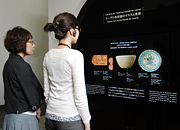 |
 |
The tour begins with a video presenting the Department of Islamic Art and its future gallery. The design and construction of this gallery in the Cour Visconti, at the heart of the museum, constitute one of the Louvre's most ambitious projects since the construction of the pyramid. |
|
 |
 |
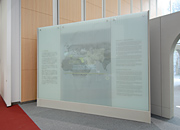 |
 |
Islam was founded by the prophet Muhammad in the Arabian peninsula in the early 7th century. The first Islamic state, established by Muhammad in Medina, launched a series of conquests that lasted almost two centuries. By the mid-8th century, the Islamic civilization had spread from Spain in the west to Pakistan in the east.
A map of the relevant geographical areas serves as a support for projected animations concerning the major events of this period. |
|
 |
 |
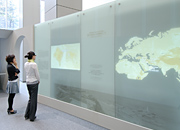 |
 |
In the early centuries of Islam, Susa was one of the empire's regional capitals. It was also a very prosperous trading center. A projection on a screen illustrates the various facets of its development and its geographical situation at this period. |
|
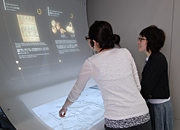 |
 |
A scale model shows the topography of the city. When a visitor touches dots that indicate the location of buildings, detailed information is displayed on a screen. This tool can be used by two people at the same time. |
|
 |
 |
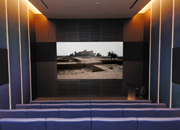 |
 |
Ultra high definition images present the history of the site of Susa, whose foundations are thought to date back over six millennia. The presentation describes the rediscovery of the city in the mid-19th century, and the many archaeological excavations carried out there. |
|
 |
 |


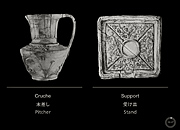 |
 |
Two of the pieces found - the pitcher and stand - were made using the most ancient technique: that of molded decoration. The shapes and motifs of these pieces share many features with other objects discovered during excavations carried out in other regions and dating from other periods. We therefore know that ceramics from Susa were exported throughout Asia and ancient Iran. |
|


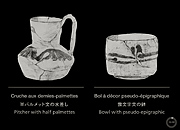 |
 |
The ceramists who tried to give their pieces the whiteness of Chinese porcelain usually decorated them with typically Islamic patterns. These two exhibits are extremely precious in that they testify to the presence of Islamic characteristics from the beginning of the Islamic civilization - the indigo colors obtained with cobalt oxide, and the motifs suggesting Arabic writing. |
|


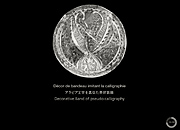 |
 |
The metallic luster ceramic technique was developed in the Islamic world. It gave ceramic pieces distinctive colors and a sheen resembling that of metal. The patterns and color tones need to be carefully studied for a better understanding of the objects. |
|
 |
 |
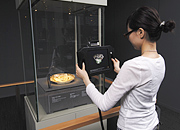 |
 |
The platter with metallic luster decoration exhibited here was reconstructed from shards, thanks to research on patterns and writing signs. The latter had spread into neighboring regions since ancient times.
Take this opportunity to experience a new approach to artworks using Augmented Reality (AR) technology, which blends filmed and digital images. Interesting details of the exhibit, such as restoration work, are pinpointed by digital images superimposed on the object itself. |
|
 |
 |
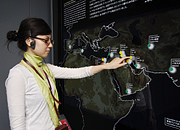 |
 |
"Metallic lusterware"-a specifically Islamic technical innovation-spread throughout the empire and as far as South-East Asia. An interactive map pinpoints the places where metallic lusterware was found or produced. The map can be interrogated by pointing to the location of a city. |
|
 |
 |
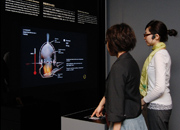 |
 |
An interactive table uses animated images to present three particularly representative techniques: molded decoration, "blue and white" faience, and metallic lusterware. |
|

